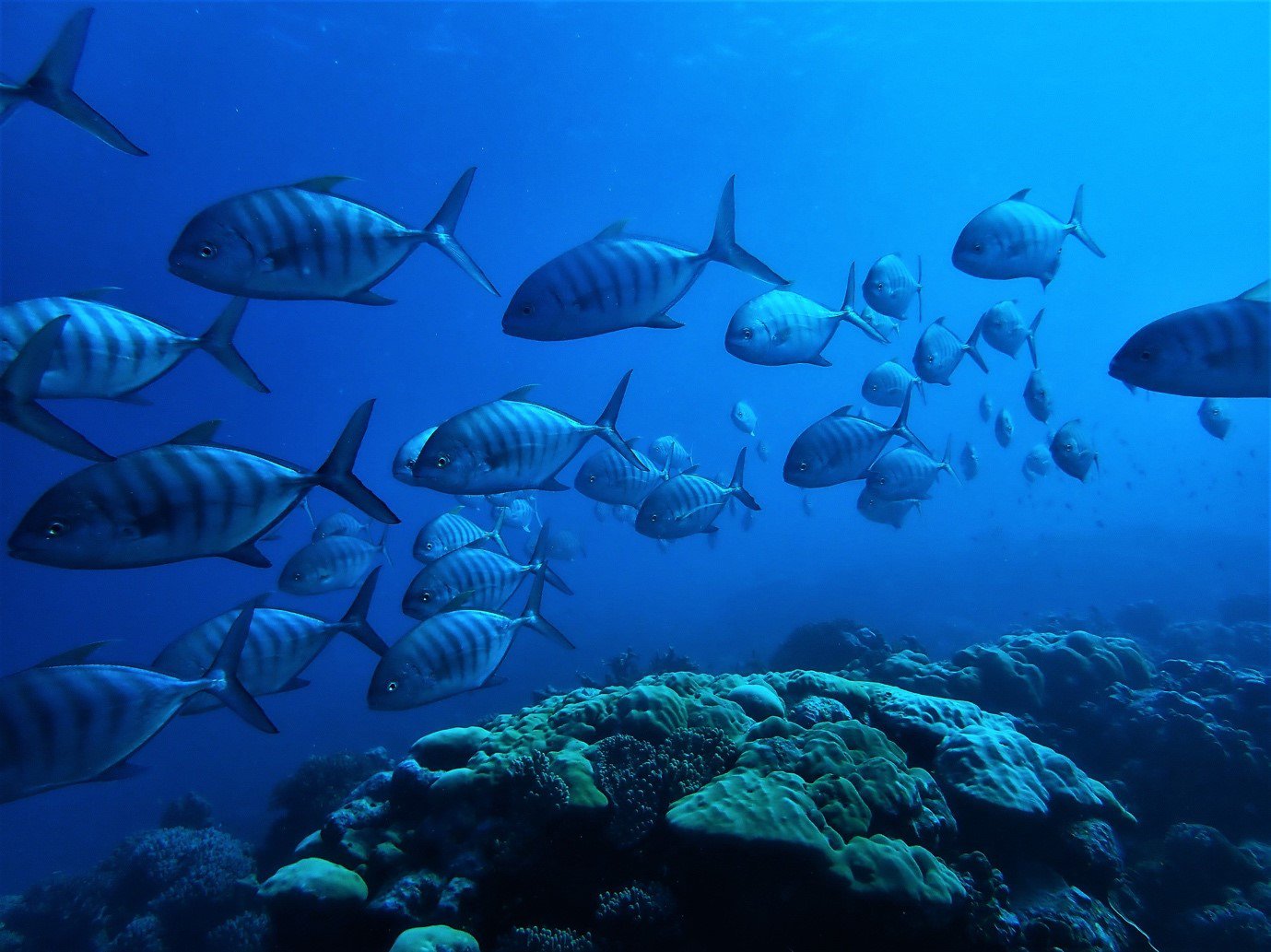Hide and seek: eDNA flushes out cryptic marine fauna and aids biomonitoring on coral reefs
Genetic remote-sensing tools, such as environmental DNA (eDNA) metabarcoding, provide new opportunities for scientists to locate endangered and/or elusive marine fauna, and to set new biodiversity baselines on increasingly vulnerable coral reefs.
Efficient monitoring of coral reef fauna is critical, given the increasing climate-related threats. At Curtin University in Perth, in collaboration with the WA Department of Primary Industries and Regional Development, we tested the use of a new genetic technique to efficiently detect a wide variety of marine fauna in a single survey at the Cocos (Keeling) Islands. The remote Australian oceanic ring-shaped coral reef is located closer to Indonesia than the Australian mainland, and harbours high marine biodiversity. Environmental DNA (eDNA) metabarcoding detected a high number of fish, shark, ray, crustacean, mollusc and echinoderm (e.g. brittle star and sea cucumber) species, including 46 new occurrence records. This powerful technique holds great promise as a cost-efficient biomonitoring tool, for the whole ecosystem.

Shallow intertidal reef at the Cocos (Keeling) Islands
Image: Katrina West© Katrina West
With mounting ecological disturbances linked to climate change and anthropogenic development, there is an increasing pressure on conservation and management resources. Traditional surveying approaches, such as camera surveillance and trapping, can be quite expensive and usually requires a number of scientists that can identify different animal species in different taxonomic groups (e.g. fish, mammals, reptiles, birds). However, there is a new genetic detection tool that is both cost-efficient and doesn’t require expertise in physically identifying different species, although it is prudent to consult regional ecologists when taxonomic detection lists are generated with this approach.
eDNA metabarcoding is an increasingly popular genetic technique. It is akin to remote-sensing, and can detect multiple species by traces of DNA that they leave behind in the environment (e.g. through the loss of skin cells, fur, saliva). The recovery of DNA from water, sediment, soil and other environmental substrates is allowing scientists to detect and survey many different animals across the food web at the same time. It is possible that this technique could be used to monitor a whole ecosystem – it was recently coined “Tree of Life, or TOL metabarcoding”!
Our teams tested the use of eDNA metabarcoding to detect a wide variety of marine animals in the waters surrounding the Cocos (Keeling) Islands. The remote Australian coral atoll is known to have high marine biodiversity, with over 600 recorded fish species, over 100 species of scleractinian coral (i.e. hard or stony corals), as well as 700 mollusc and 200 crustacean species.

A school of golden trevally (Gnathanodon speciosus) at the Cocos (Keeling) Islands
Image: Zoe Richards© Zoe Richards
Water samples were collected at 42 ocean sites in and around the coral reefs in 2017. DNA was extracted from these water samples and processed back at the TrEnD Laboratory in Curtin University. Our results have recently been published in the scientific journal Molecular Ecology. In total, we detected 244 bony fish and shark/ray species, 88 crustacean species, 37 mollusc species and 7 echinoderm species. This included important shark and ray species such as the tiger shark (Galeocerdo cuvier) and giant oceanic manta ray (Mobula birostris), as well as key subsistence and recreational fishing species, such as the humphead Maori wrasse (Cheilinus undulatus ) and passionfruit coral trout (Plectropomus areolatus ); the latter species notably absent from Cocos (Keeling) catches for several years. We also detected 46 new occurrences, which are species that have never been previously recorded at this location. These eDNA records set a new biodiversity baseline for continual monitoring of the coral reef fauna at the Cocos (Keeling) Islands.

Passionfruit coral trout (Plectropomus areolatus) at the Cocos (Keeling) Islands, which we detected with our environmental DNA (eDNA) approach
Image: Tane Sinclair-Taylor© Tane Sinclair-Taylor
Another aspect of our research was to investigate whether the DNA we detected in the water at a specific location actually reflected the local marine community. Given seawater moves with currents and tides in the ocean, it is possible that DNA is also being swept along and therefore an animal that we detect with DNA in the water could actually live further upstream or at another island habitat altogether. However, we found that despite extensive water movements, the DNA that we detected at each site did actually reflect the surrounding habitat based on multivariate analyses. This verifies that eDNA metabarcoding is a valuable tool to detect marine animals in their local environment, particularly cryptic species that like to hide, without having to physically see them!
We have shown that eDNA metabarcoding is a great new tool to detect a wide range of marine animals on a coral reef and update biodiversity baseline information. This will help inform conservation and management strategies and keep an eye on vulnerable populations that may be affected by climate-related threats, such as increased frequencies of coral bleaching events and cyclonic storm surges.
Katrina West, PhD Candidate, School of Molecular and Life Sciences, Curtin University
Dr Joseph DiBattista, Scientific Officer, Curator Ichthyology, Australian Museum Research Institute
More information:
West, K. M., Stat, M., Harvey, E. S., Skepper, C. L., DiBattista, J. D., Richards, Z. T., ... & Bunce, M. (2020). eDNA metabarcoding survey reveals fine‐scale coral reef community variation across a remote, tropical island ecosystem. Molecular Ecology. https://doi.org/10.1111/mec.15382

